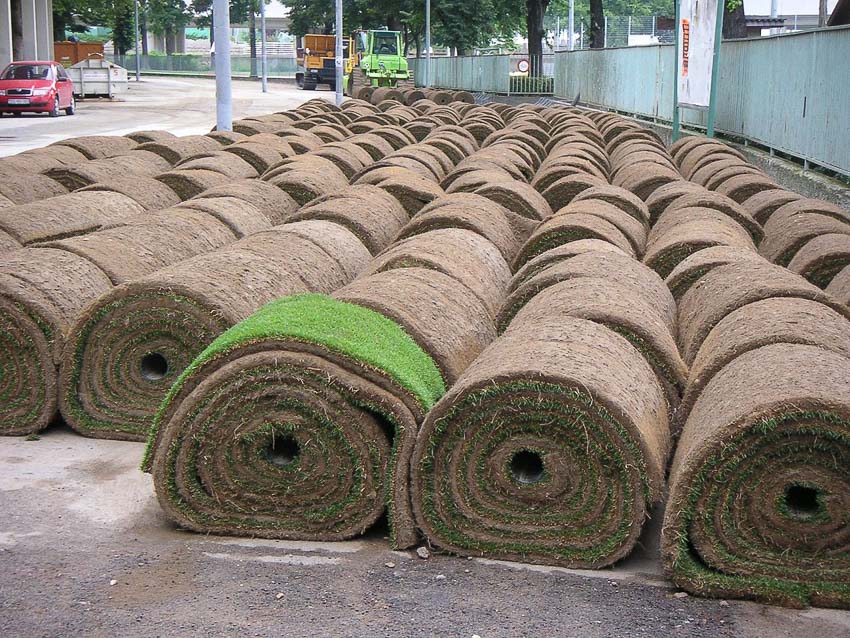A Detailed Guide to Laying Down the Money for a Beautiful Lawn
It’s pretty obvious that sod is more expensive than planting grass from seed, but just how much does sod cost to install? With this detailed guide, find out everything you need to know about installing sod in your yard.
What is Sod?
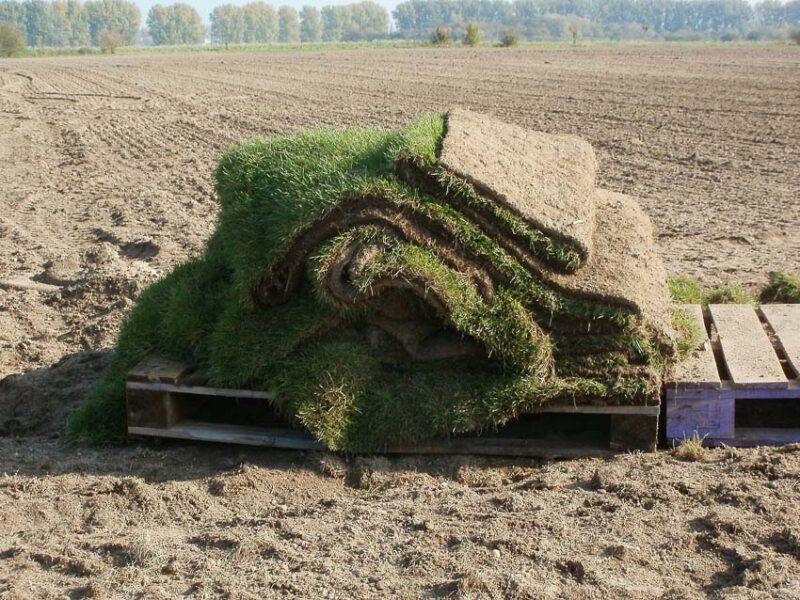
Sod is turf grass grown for replanting on lawns and sports fields in commercial and residential applications. Sod grows in large fields.
Planters harvest it in strips using special equipment that separates the grass and roots from the soil. Then they cut it into even sections.
Vendors often sell sod in small square or rectangular slabs. But sometimes they deliver it in wide rolls.
They often cultivate this product within 100 miles of where they eventually sell it. Planters use a variety of grasses for sod, including different types of warm-season and cool-season grasses.
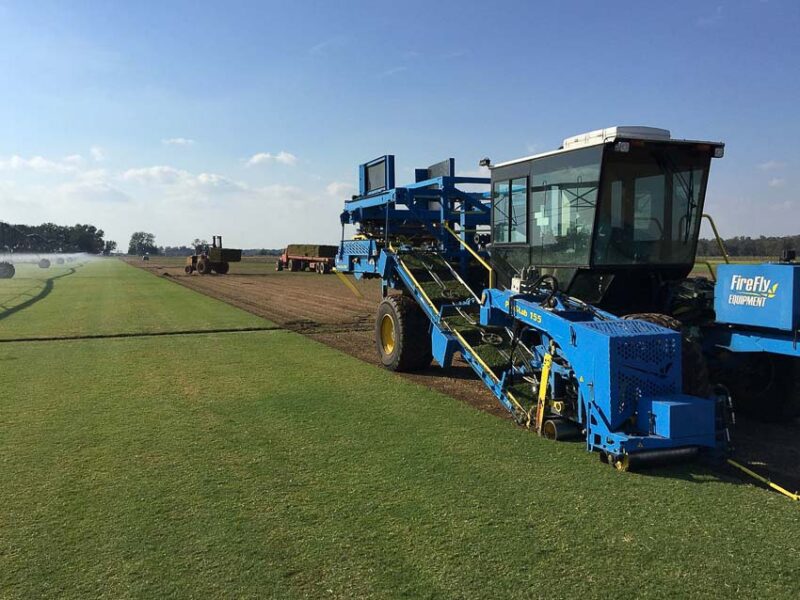
Depending on the region, it can take between 10 and 18 months to produce sod from seed.
When you need immediate results, sod is an excellent option. It provides benefits like erosion control and dust containment right away. What’s more, it’s frequently used on athletic fields where crews need to lay it expeditiously.
Residential and commercial landscaping, playgrounds, and roadside embankments are other top uses for sod.
Understanding the Basics of Sod
To find out how much it costs to install sod in your yard, you first need to understand the basics. Installing sod is more complicated than grabbing a turf roll, throwing it down in your yard, and watering it.
Successful sod installation hinges on proper methods, and every step has to be done right, starting with choosing the right type of sod. Sod installation requires careful site preparation and follow-up care, and even though you can do it yourself, it can be worthwhile to hire a professional.
The Benefits of Using Sod
It can take up to two years for grass to become established from seed, and you might not want to wait that long to have thick green grass. However, since sod is durable and can withstand foot traffic better than freshly planted grass, you don’t have to tread as lightly.
Furthermore, you can start using your lawn right away for backyard barbecues and dinner parties.
Newly planted lawns need a lot of attention, and only some have the time in their busy schedule to baby a new lawn. When you plant sod, you can treat it like an established lawn within a few weeks, using a normal watering, mowing, and fertilizing schedule.
Sod lawns are also resistant to weeds, especially when properly installed.
Average Cost to Install Sod
How much does it cost to have sod installed? It costs an average of $0.30 to $0.83 per square foot. In addition to the cost of sod, installation averages about $0.57 to $0.93 per square foot.
An average-sized lawn is about 5,000 square feet. Installing sod on a lawn that size will cost about $1,500 if you do it yourself. If you have it installed by a professional, it can cost up to $8,800 for a 5,000-square-foot lawn.
Factors Influencing the Cost of Sod Installation
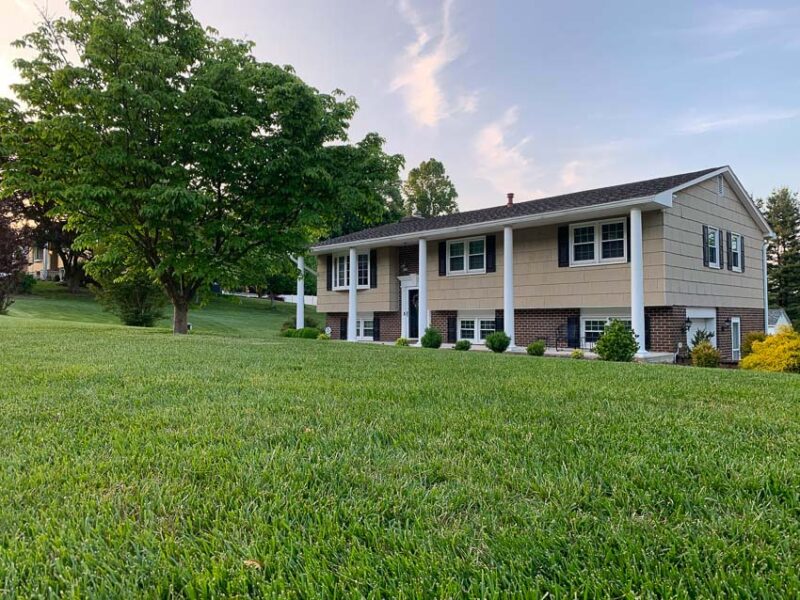
Every sod installation is different, and several factors can affect the final cost of sod installation in your yard.
Yard size
The size of your yard may be the most significant factor influencing the cost to install sod. Since you’re paying for sod by the square foot, it’s obviously going to cost more to install sod in a larger area.
However, you may get a price break once you reach a certain quantity.
Lawn shape
The simplest shape for installing sod is squares or rectangles, and if you have to cut circular shapes, it takes longer and costs more. In addition, you may waste material.
Moreover, you should add at least 15% to your order to account for this. Or, you can square off the measurement when calculating the square footage so you don’t end up short.
Accessibility
It’s much faster when the delivery vehicle can pull up to where you want to install the sod. The further away you get from the delivery location, the more it will cost you.
Delivery fees
Most sod is grown within 100 miles of where it is sold. However, you may live in an area where sod has to travel farther than that. The more distance your sod travels to reach its final destination, the more you can expect to pay.
Soil preparation
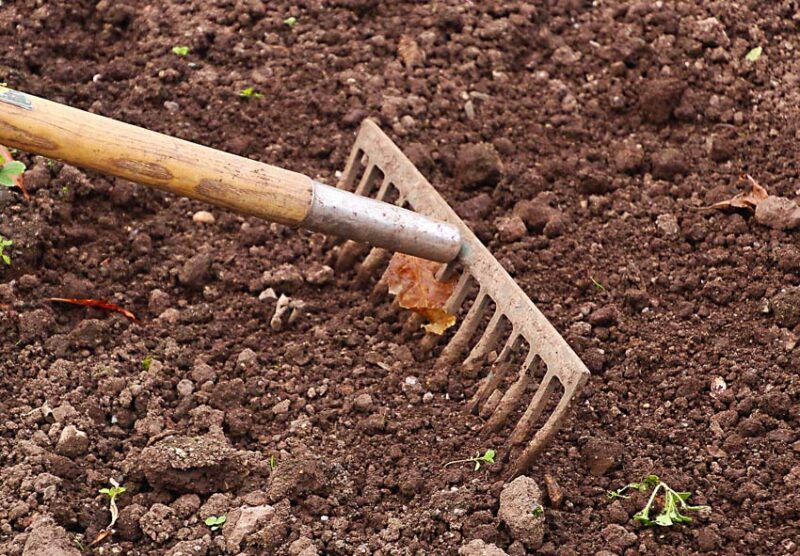
Ground prep work is the biggest part of installing sod, but you have a unique opportunity to lay a good foundation for your new lawn, and it’s an excellent time to improve the structure and health of your soil.
Here are the most common tasks associated with soil preparation:
- Removing your old lawn
- Cultivating
- Testing the soil
- Adding topsoil and other soil amendments
- Fertilizing
- Grading and leveling
Hardscaping obstacles
Anything that gets in the way and makes the job take longer will add to the overall cost of sod installation. Obstacles like pathways, retaining walls, rock gardens, ponds, and patios can all make installation more difficult.
Sprinkler systems
Whether you have an existing sprinkler system that crews have to work around, or you’re installing a new one, factor the added cost into your budget.
Sod Price Breakdown by Type and Region

Nationally, prices for sod vary widely. Choosing the best type of grass for your yard starts with finding your growing zone, and various types of sod cost different amounts.
Other factors like regional labor costs can also affect the cost to install sod per square foot. Lawns in northern regions grow cool-season grasses, and warm-season grasses are used in the south.
Here are some average prices for different types of grasses, which will vary depending on availability in your area.
Cool-season grasses:
| Type of grass | Average cost per square foot | Qualities |
| Kentucky bluegrass | $0.30 | Deep green color, prefers full sun, excellent cold tolerance. Some cultivars are shade tolerant. |
| Perennial ryegrass | $0.20 to $0.50 | Tolerates light shade. Fast-growing grass requires more water and fertilizer than other cool-season grasses. |
| Fescue | $0.25 to $0.65 | Several varieties are available for full sun or shade. Hardy grass does well with pets and children. |
Warm-season grasses:
| Type of grass | Average cost per square foot | Qualities |
| St. Augustine | $0.30 to $0.70 | Tolerates shade better than most warm-season grasses. Not tolerant of cold or drought, and commonly susceptible to fungus, diseases, and pests. |
| Bermuda grass | $0.40 to $0.80 | It needs at least 7 hours of full sun to thrive. Tolerates heat, drought, salt, and foot traffic. |
| Zoysia | $0.40 to $0.70 | Tolerates foot traffic moderately well. Low maintenance grass with shade tolerance, but does best in hot weather and full sun. Also resistant to weeds. |
Additional Costs to Consider
There’s nothing overly complicated about installing sod to create a new lawn, and many people are successful with DIY sod installations. However, it’s worth at least considering the extra cost of hiring a professional sod installer because there are many benefits of having it installed.
The whole point of using sod is to get a fast, healthy lawn that looks great and improves the value of your home, both in terms of curb appeal and usability. If you botch the job, you’re not just out money, you’ve also wasted valuable time.
Unfortunately, not everyone is up to the physical challenges of installing sod, either.
Most sod installers won’t give an accurate quote until they see your yard in person. Slopes, hillsides, and rocky terrain can make sod installation more difficult, and professional installers need to know what they are getting into before they give you an estimate.
When you hire a professional, expect to pay at least $0.50 more per square foot for installation and up to $1.00 in some areas. For that price, professional sod installers will help you every step of the way, including planning your project and following up to ensure a successful sod installation.
How to Install Sod
Installing sod on your own may be the way to go for the DIY enthusiast. However, many people like to save money by doing home and yard projects themselves. And if you have the time and physical capabilities to handle a big job like sod installation, it can be worth it.
Preparing Your Lawn for Sod Installation
After measuring your lawn and deciding what type of sod to use, prepare your lawn for sod installation.
Sod needs to be planted soon after delivery. You should order about 10% more to ensure you have enough, but wait until the ground is prepped to order your grass.
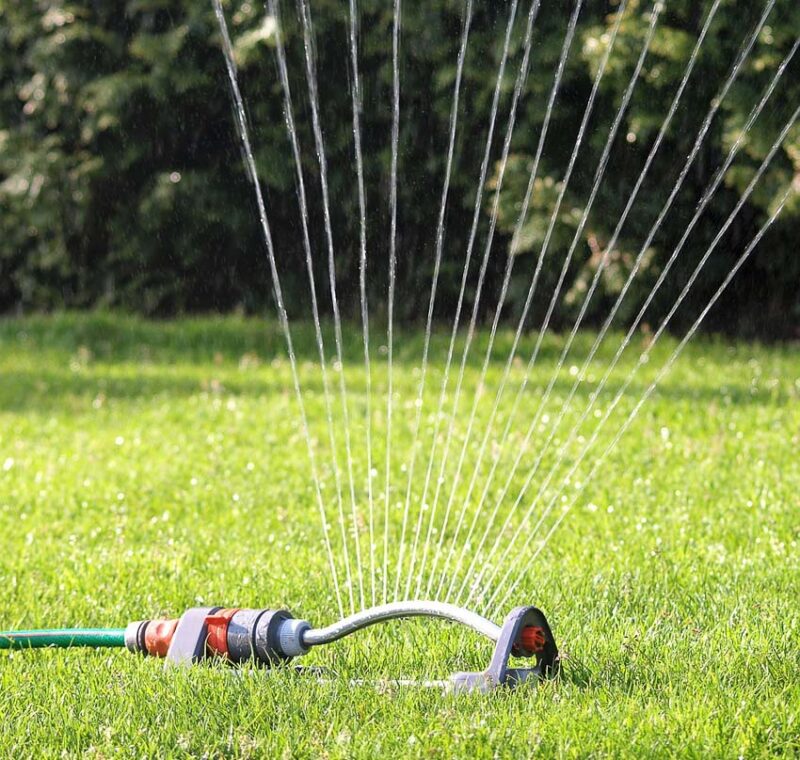
Sod can’t be planted on top of an existing lawn, so removing your lawn is necessary, which can take a few weeks. Water your lawn, then apply a non-selective post-emergent herbicide to the entire area.
Choose a chemical herbicide like Roundup Weed & Grass Killer or an organic herbicide like Green Gobbler 20% Vinegar Weed & Grass Killer.
After applying the herbicide, cover your lawn with a thick mulch or a layer of black plastic. Wait a few weeks, and then you can till the dead grass.
Removing an existing lawn is easier after the grass dies completely, and it gives the herbicide a chance to break down, so it won’t affect your new lawn.
Before planting is the time to test your soil. It’s easier to work fertilizers and amendments like lawn lime into the soil before you lay the sod. You can also add topsoil or compost to improve the structure of your soil.
Till your soil to a depth of at least 6 inches, then rake it smooth, removing rocks and debris. Ensure that water drains away from your house and is at least one inch below sidewalks and sprinkler heads.
Water it thoroughly, and after it drains, add soil to any areas that formed puddles. Once you are satisfied that it is level, you can lay the sod.
Laying the Sod Properly
Whether you purchase sod in sections or rolls, it must be laid in neat rows that fit snugly together. Next, apply your sod to damp soil, using your rake to smooth out the ground as you go.
Once you have completed a section of lawn, water it, preferably within 30 minutes of laying it.
Work across your lawn row by row, using the back of your shovel to pat down any bumps. You want to ensure good contact between the roots and the soil but don’t step on it.
Use a lawn roller to flatten the sod and press out air pockets. Alternatively, you can use a 4’ x 8’ sheet of plywood placed on the ground. Walk on the plywood to press the sod evenly and firmly in place.
Double-check to ensure that all gaps have been filled in, and use leftover bits of sod if necessary. Make sure that the entire lawn is watered immediately after installation.
Caring for Your New Sod
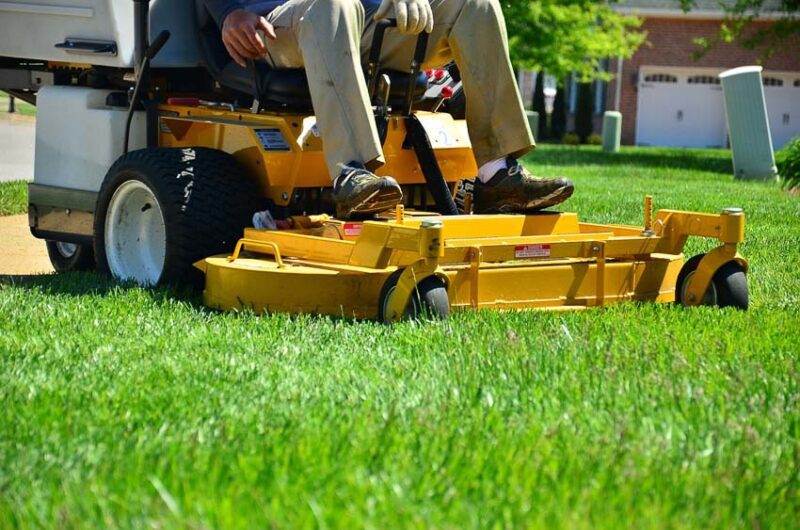
You should water your new lawn daily for a week. After that, you can use a normal lawn watering schedule.
Wait until the grass is about 3” tall before you mow it. It’s best to use a push mower instead of a riding mower the first few times to avoid damaging your new lawn. After the first mowing, you can fertilize your lawn so nutrients are readily available in the root zone.
FAQs about Sod Installation Costs
How do I determine the amount of sod I need?
Most sod comes in 2.75 square foot sections.
To determine how much sod you need, calculate the area of your yard (length x width) and then divide that by 2.75 to find out how many sections you need. For example, if your lawn and garden center sells it by a 500-square-foot pallet, divide the area of your yard by 500 to determine how many pallets you need.
Can I install sod myself to save money?
You can install sod yourself to save money. However, it’s a big job, and it’s worth considering hiring a professional.
Also, if it’s not installed properly and you end up with a failed lawn, redoing it will cost you even more money.
What is the best time of year to install sod?
Sod can be installed throughout most of the year, except when the ground is frozen or during periods of extreme heat. The best time of year to install sod is late summer to mid-fall, and the second best time is spring.
How long will it take for the sod to establish itself?
Sod will be fully established within six weeks.
Be sure to feed your sod after installation with a balanced fertilizer that encourages green growth and root development. Then, wait at least a week to start using your lawn, and continue to water it regularly until it’s fully established.
Are there any alternatives to sod that may be more cost-effective?
Instead of sod, consider artificial grass. It’s considerably less expensive than sod, and you’ll save money year after year without the cost of maintaining a lawn.
In addition, artificial lawns today are of higher quality than a few decades ago, and many people use them as an eco-friendly alternative to grass.

